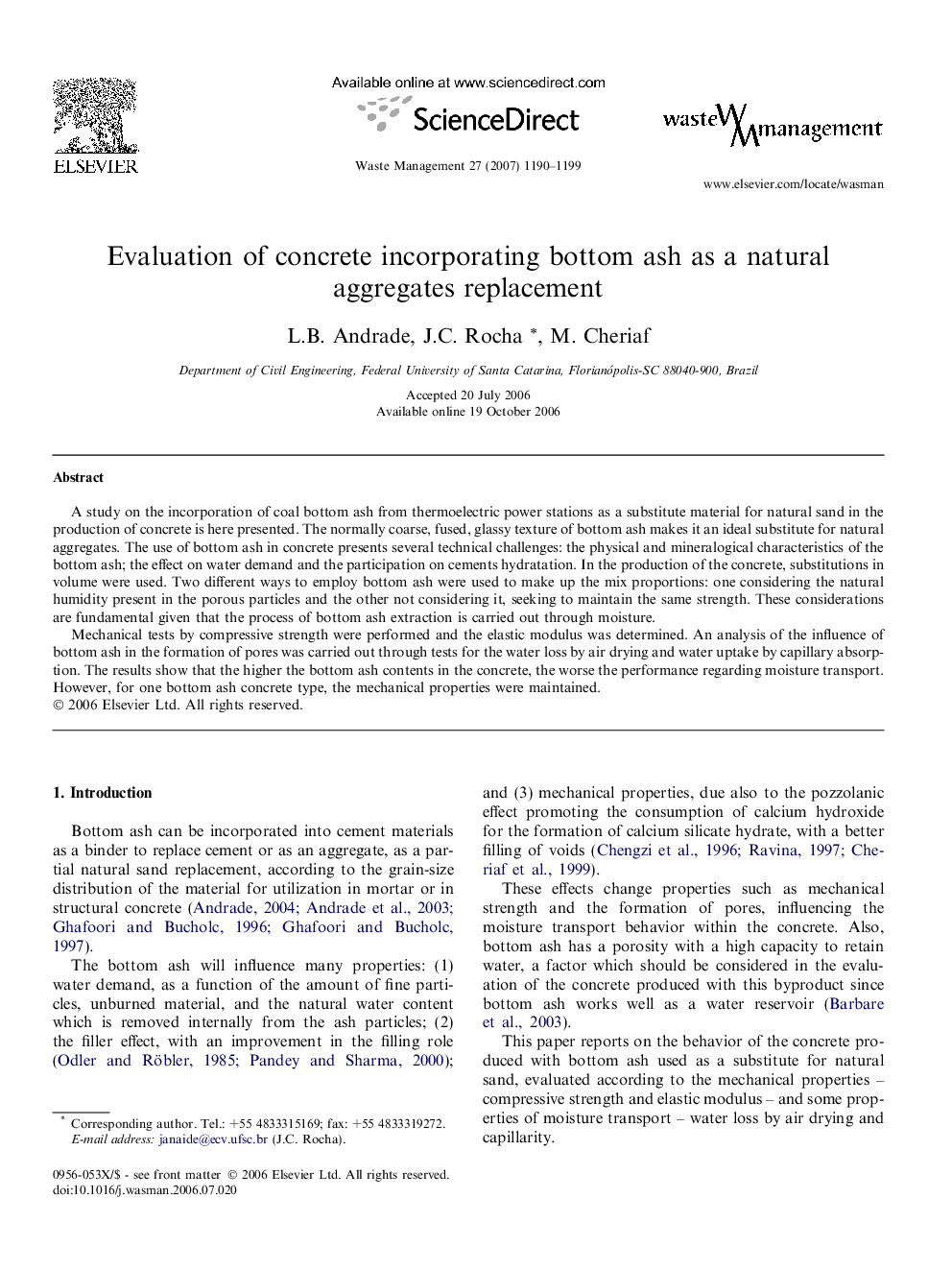| Article ID | Journal | Published Year | Pages | File Type |
|---|---|---|---|---|
| 4474113 | Waste Management | 2007 | 10 Pages |
A study on the incorporation of coal bottom ash from thermoelectric power stations as a substitute material for natural sand in the production of concrete is here presented. The normally coarse, fused, glassy texture of bottom ash makes it an ideal substitute for natural aggregates. The use of bottom ash in concrete presents several technical challenges: the physical and mineralogical characteristics of the bottom ash; the effect on water demand and the participation on cements hydratation. In the production of the concrete, substitutions in volume were used. Two different ways to employ bottom ash were used to make up the mix proportions: one considering the natural humidity present in the porous particles and the other not considering it, seeking to maintain the same strength. These considerations are fundamental given that the process of bottom ash extraction is carried out through moisture.Mechanical tests by compressive strength were performed and the elastic modulus was determined. An analysis of the influence of bottom ash in the formation of pores was carried out through tests for the water loss by air drying and water uptake by capillary absorption. The results show that the higher the bottom ash contents in the concrete, the worse the performance regarding moisture transport. However, for one bottom ash concrete type, the mechanical properties were maintained.
